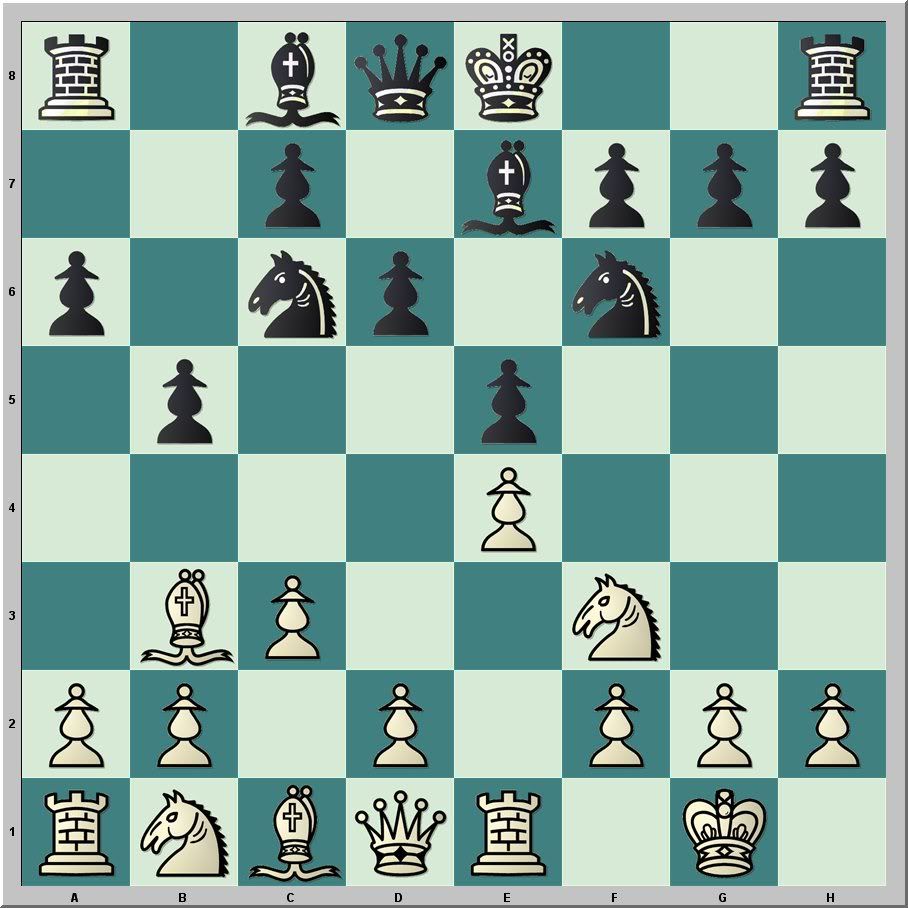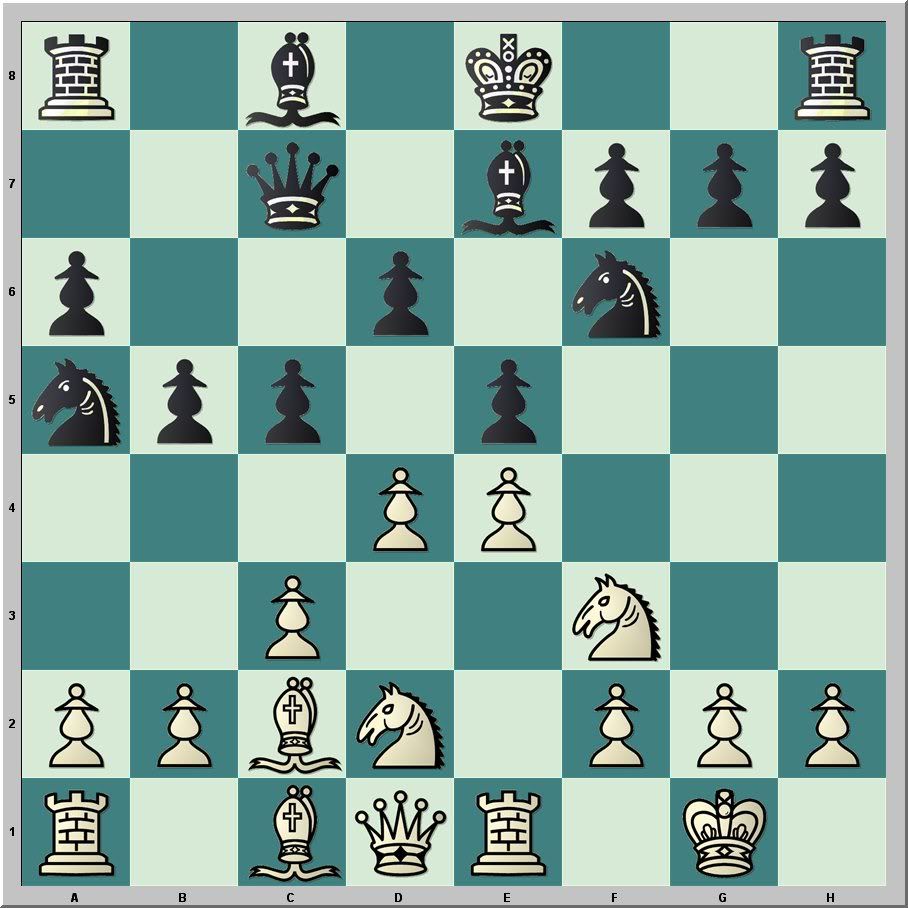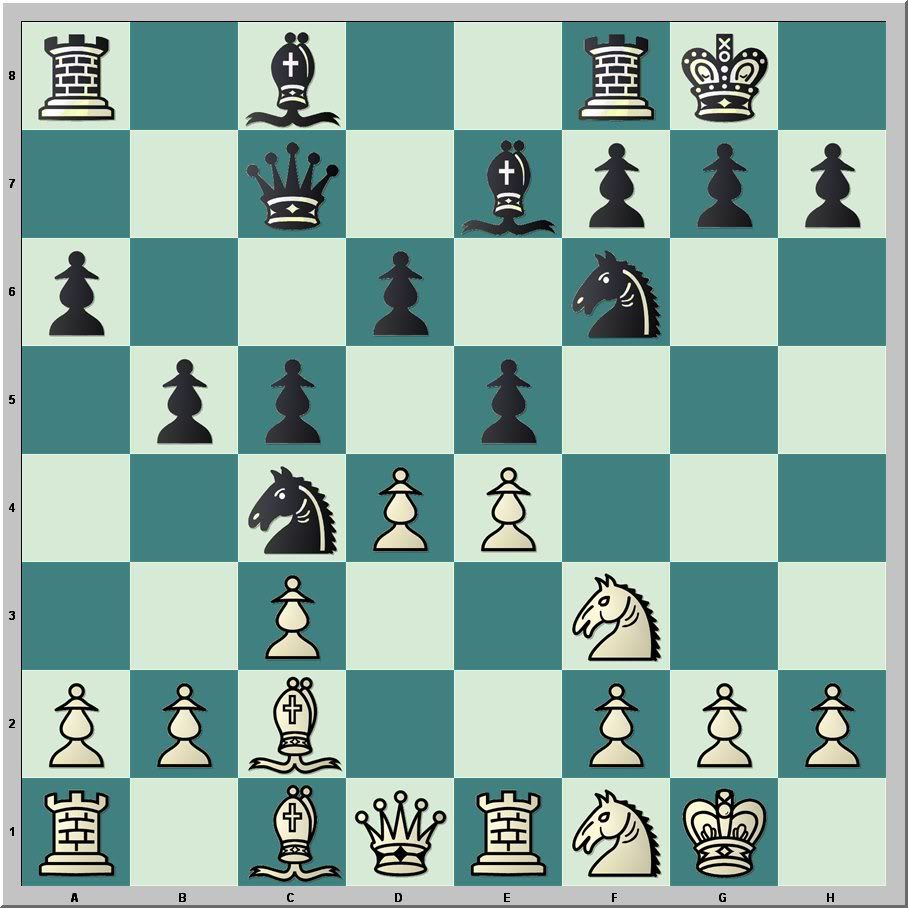Is the game score authentic? What is the source employed by whoever submitted the database to Ossimitz?
The game appears to have been part of the Moscow Championship 1939. Big Database 2011 contains seventeen games from this event. RUSBASE 1920-1994 offers more: a crosstable, and a database containing twenty-one games. Perhaps this site is trustworthy for an accurate score. The notation matches that in the Ossimitz database.
I have a hunch that the small number of games available from this event were published, and perhaps annotated, in Soviet newspapers or magazines. Perhaps Panov's own annotations exist somewhere.
Smyslov,V - Panov,V [C90]
Moscow 1939
1.e4 e5 2.Nf3 Nc6 3.Bb5 a6 4.Ba4 Nf6 5.0–0 Be7 6.Re1 b5 7.Bb3 d6 8.c3 Na5 9.Bc2 c5 10.d4 Qc7 11.Nbd2 0–0 12.Nf1 Nc4 13.Qe2 Nb6 14.Ng3 g6 15.h3 Re8 16.Bg5 Kg7 17.Rad1 Ng8 18.Bc1 Bf6 19.d5 Bd8 20.Kh2 Ra7 21.Nf1 h5 22.Ng1 Nf6 23.g3 Rh8 24.Kg2 h4 25.f4 hxg3 26.fxe5 dxe5 27.Nxg3 Nh5 28.Nxh5+ Rxh5 29.b3 c4 30.Qf3 Qd6 31.Be3 Re7 32.b4 Nd7 33.Qf2 Re8 34.Bc5 Qf6 35.Qxf6+ Nxf6 36.Re3 Reh8 37.Rg3 Rh4 38.Bd6 Nh5 39.Bxe5+ f6 40.Bd6 Nxg3 41.Bxg3 Bxh3+ 42.Nxh3 Rxh3 43.a4 R8h5 0–1
This game features an instructive assault upon the white king that begins with an h-pawn thrust, but my quest for Smyslov's errors this morning have kept me exploring the opening. The game opened as a closed Spanish.
Smyslov,V - Panov,V [C90]
Moscow 1939
1.e4 e5 2.Nf3 Nc6 3.Bb5 a6 4.Ba4 Nf6 5.0–0 Be7 6.Re1 b5 7.Bb3 d6 8.c3

8...Na5
The usual move from this position these days is 8...O-O. Garry Kasparov calls Panov's move dubious in his annotations to the third game in the 1908 World Championship, Lasker - Tarrasch. Through White's move 11, this game followed two games from that event: Lasker's defeat in game 3, and Lasker's victory in game 5. Lasker was an important early influence upon Smyslov.
Kasparov recommends the move order 8...O-O 9.h3 Na5 10.Bc2 c5 11.d4 Qc7 as "more accurate", noting that Tarrasch's generation feared 9.d4 after 8...O-O because they failed to understand Black's counterplay after 9...Bg4 (My Great Predecessors, Part 1, 161). Lasker corroborates Kasparov's assessment in his note to move 11.Nbd2 in Lasker's Manual of Chess that 11.h3 strikes him as a waste of time. Perhaps the position is different one move later when Lasker played 12.h3 in his two games against Tarrasch. Kasparov calls 12.h3 "non-essential" and refers readers to Capablanca - Duz-Khotimirsky, St. Petersburg 1913 where he mentions Capablanca's recommendation of 12.d5 (Capablanca played 12.Nf1 in the game). According to the crosstable at Rusbase, Duz-Khotimirsky handed Smyslov his only other loss in this event won by Lilienthal with Panov and Smyslov one point behind.
12.h3 transposes to my game against Alex Chow in the 2005 Eastern Washington Open where Alex played this move much earlier (and thereby avoided the Marshall Attack I had planned). I won this game only when Alex missed a key tactic in the middle game.
9.Bc2 c5 10.d4 Qc7 11.Nbd2

Here the Lasker - Tarrasch games continued 11...Nc6 12.h3 reaching a position with four instances in the past half-dozen years among the selection in Big Database 2011.
11...O-O
Vasily Panov's choice is far more common, appearing in Kamsky - Eljanov, Jermuk 2009 among nearly twelve thousand other games. Now Smyslov selects an unusual move.
12.Nf1
The "non-essential" 12.h3 is vastly more common: ChessBase Online contains 11,861 games with 12.h3, 79 games with 12.Nf1, and 43 games with Capablanca's recommended 12.d5. Smyslov's move has the highest scoring percentage.
Such percentages easily mislead. The highest rated Black player to lose after 12.Nf1 was 2351 in the game Pon - Mohota, Chennai 2009 from the Women's championship of India. That game came down to a bishop vs knight endgame in which White's king became more active on the queenside. 12.d5 appears in encounters among stronger players, but the "non-essential" 12.h3 has been played by the likes of Ivanchuk, Leko, Karjakin, Svidler. It appears no less than eight times since 2009 by players rated over 2700. Perhaps the world elite have not read Kasparov's book.
12...Nc4

ChessBase Online offers eight games that reach this position, which includes one correspondence game absent from Big Database 2011. The only Black win in this set is Petera - Cekan, Klatovy 2003 which gives no ratings for the players. The earliest game to reach this position was Reti - Van Nuess, Dortmund 1928 (Reti won) and the most recent was a draw between two experts in 2009. That draw and two White wins continued with 13.b3, the first move I considered and the choice Hiarcs 12 prefers. Rybka 4 concurs.
The knight is not particularly dangerous on c4, and when driven back to b6 is one move from d7, while also keeping an eye on a4.
13.Qe2
No other game contains this move.














No comments:
Post a Comment